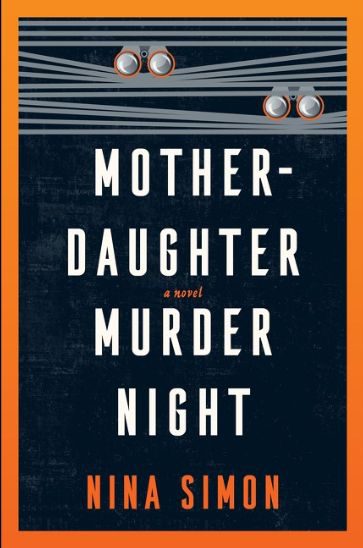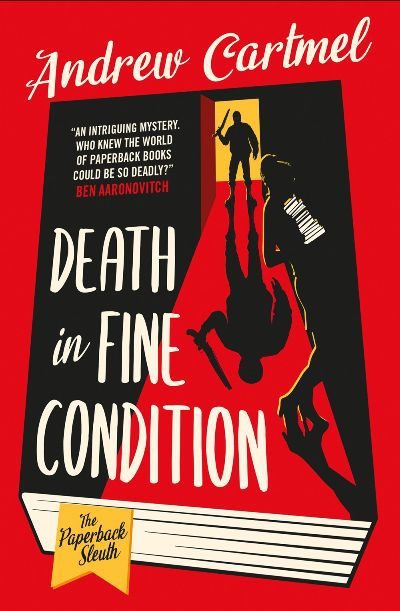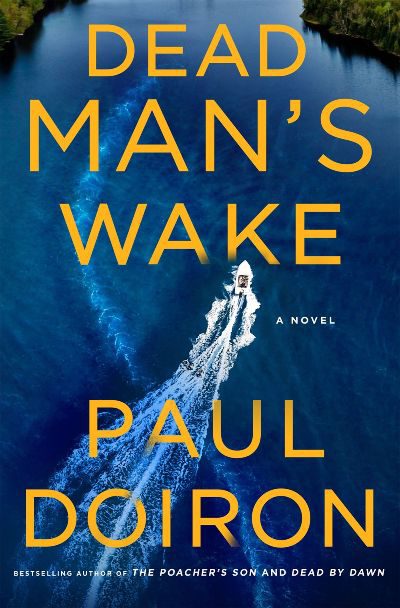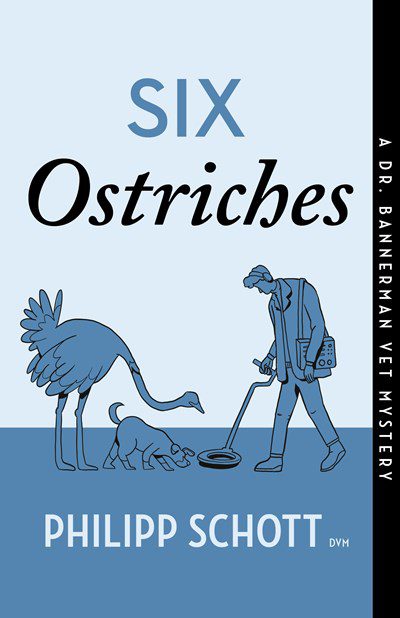A wonderfully paced mystery, in a fascinating setting, told through the lives of three generations of women. Lana Rubicon is one of the leading real-estate developers in Los Angeles. But these days she’s spending less time running to power meetings in her Chanel suits and Jimmy Choos and more time asleep on her daughter Beth’s sofa, 300 miles up the coast. Recovering from cancer, the super Type-A Lana is bored beyond belief, with her days spent observing life in the slough—that’s a wetland, or marsh—that surrounds them. But when Jack, her teenage granddaughter, finds a body in the slough, where she gives kayak tours part-time, and the cops start looking at Jack like suspect number one, Lana grabs her wig and gets in on the action. The action, it turns out, is quite complicated, involving the recently deceased patient of Beth, a land dispute that involves one of the most prominent families in the area, rich ranchers, and some conservationists who can’t be completely trusted. To find the truth, and to get out alive, all three women need to do the unthinkable: work together. This reader would love to see more from this fab trio.
Mystery & Detective
After a stint as an advertising executive in New York City, Mallory is back in Wingate, Connecticut, where she has taken over her recently deceased aunt’s Cookie Shop. Finally, a long-held dream fulfilled. Except Mallory’s staff of two can’t stop rankling each other, her boyfriend is seen in a compromising situation with another woman, and food blogger Beatrice Wright, aka Queen Bea, is accusing her of stealing a recipe. Then Beatrice is discovered dead, lying on her kitchen floor, her body outlined by flour. And who might have discovered the body? Our heroine, Mallory–who had stopped by Beatrice’s house to make cookie peace. While this novel uses many of the tropes of cozy fiction, there’s a wonderful freshness about Mallory, who can’t wait to let others solve the murder, and confronts all likely suspects herself, in a direct and unvarnished manner. The first in a series that many cozy readers will love. One request: it’s time for Kip, Mallory’s BFF and fellow baker, to come out. Everyone seems to have a love life, while he’s left at home making spaghetti for Mallory and loading up the Netflix. Sad.
Think you’ve made mistakes in your life? Meet Gabe Angueira, who had a rocky time growing up as one of the few Puerto Ricans in Louisville, Kentucky, but has found success as a landlord of multiple properties around the city. He’s divorced—alcohol played a big role with both spouses—but now is living with his ex-wife, Anya, maintaining a kind of truce as they care for their daughter, who’s in a minimally conscious state since she crashed her car, drunk. Gabe’s just trying to get by when he meets a mom who seems to be in the same boat. She’s close to tears when she shows up to see Anya’s for-rent house; she just wants to help her daughter, who’s pregnant and desperate. But Gabe doesn’t have a rental agreement with him when he shows her the property, and on her part, she doesn’t have a check for the deposit. Never mind, thinks Gabe, he’ll pick it up later. Readers can feel a disaster looming, but will in no way be ready for the catastrophe that unfolds…and unfolds..and explodes. This is a gripping, emotional, and adrenaline-filled ride all the way through. I can’t wait for more from this debut author.
Set in the same quirky, whatever-can-go-wrong-will world as his Vinyl Detective books, Cartmel’s new series dives deep into the world of vintage-crime-fiction-paperback collectors through the, ahem, creative endeavors of Londoner Cordelia Stanmer to find the best of the best. She’s starting to make her mark in the cutthroat field and knows what she’s looking for as she mines “charity shops, antique shops, jumble sales, book sales, estate sales, house clearances, auctions…” The list goes on, as does the effort to find prime goodies without her rivals in the trade getting there first. Then she finds a shortcut: a local house has a collection—dare she hope it’s complete?—of the Sleuth Hound paperbacks, “the finest horde of these rarities she’d ever encountered.” The hunt is on, with Cordelia tossing aside pesky details such as current ownership while also juggling local gangsters, her slimy brother, a crush on a glamorous but unattainable woman, curious demand for a bad self-published title that’s not even vintage, her weird landlod…again, the list goes on, but Cordelia is ready for it all. Her antics, which will remind readers of Elle Cosimano’s madcap sleuth, Finlay Donovan, create a fun and fast-moving romp; the cherry on top is the wealth of real detail on crime-fiction collectables
Depression-era San Francisco’s Claremont hotel is a wonderful playground for sisters Isabella and Iris Bainbridge Stafford, six and eight years old, respectively, who roam through it while their wealthy mother plays tennis. The luxurious hotel has a seven-story-long spiral slide that guests can use as a fire escape, one that Iris might think she’s entering to play when she fatally plunges down a laundry chute. Years later, tragedy visits the hotel again—many say it’s been cursed all along—when Presidential candidate Walter Wilkinson is found murdered in his room (murdered twice, in fact—the book explains all). Police officer Alejo Gutiérrez, passing as Al Sullivan, is the slightly jaded, but still caring, investigator who must sift through the jumble of rumors, racism against Asian hotel workers and city residents, and secretive behavior by rich characters who think the law doesn’t apply to them in his efforts to discover who killed the politician. This saga—the story has as many twisting corridors as the hotel–allows Chua to dig deep into the privileges and invisible barriers at work in any haves-and-have-nots meeting, with memorable results. Pair this with the information on the treatment of San Francisco’s Chinese citizens in David Quammen’s excellent Spillover for a sobering and enlightening view of that community’s history.
Both fans and newcomers to the series can sink deep into the pages of Doiron’s latest Mike Bowditch adventure, which sees the Maine game warden’s family vacation upended by what at first appears to be a boating accident. A man’s arm is found floating in the lake, clearly torn off by a boat propeller. Finding the related body opens a new scenario that Mike, local police, and the local forensic examiner puzzle to solve while also navigating the behavior of the rich. They live on the lake where the arm was found and aren’t keen on having their vacations interrupted. Law-enforcement politics are also to be maneuvered around, a tricky task when the lake constable wanted a game warden’s job but was considered too erratic. At the center of the maelstrom is the calm circle of Mike’s family, whose love and stability provide a stark contrast to the nail biting scenes facing the warden. Wilderness thrillers provide a great break from the real world—get this one on your list.
I eagerly await the books in the Odessa Jones series, and the latest offering is better than ever. Odessa (Dessa) is a realtor/caterer in suburban New Jersey. Life is going well—housing sales are way up—until one of her realtor colleagues, Anna Lee, is killed in a hit and run while out jogging. Could it have been murder? Dessa can’t help but become involved. She goes deep into her colleague’s life, uncovering a surprising past and a present in which Anna was being stalked. But why would anyone threaten this young woman? In a brilliant move on the author’s part, Dessa ends up discovering her connection to Anna, one that extends back decades to Dessa’s first fiancé, when she was barely in her twenties. Part of the delight of this series, which is set in a diverse community, is the recurring characters, from Dessa’s family-like colleagues to restaurateur Lennox Royal—a possible love interest?—to Aunt Phoenix. Dessa’s second sight—she sometimes has the ability to see aura-like glimmers over people, among other paranormal skills—is a gift she has along with her aunts. It’s introduced deftly in the book, and even skeptics will find the protagonist’s gift wholly credible–at least while they’re wrapped up in the plot. This is billed as a cozy—there is a cat and plenty of tea—but Wesley pushes a bit beyond the genre’s traditions. Dive in with this volume, but if you have the time, start with volume one, A Glimmer of Death. You won’t be disappointed.
A school shooting in fictional Charon County, VA, reveals horror and catalyzes reckoning in S.A. Cosby’s eagerly awaited follow-up to Razorblade Tears. This is, unsurprisingly, a masterpiece of Southern noir, but that’s selling it short: it’s a fantastic novel, period. The first responders to the shooting are led by Sherriff Titus Crown, a Black man who won a contentious, racist battle for his seat and who now safeguards Klan members and kind neighbors alike. Titus is able for them all, alternating deep kindness with cutting, politically savvy one-liners that put racists in their place. (Appropriate, given his lack of fondness for “stand[ing] there like an extra in Gone with the Wind.”) But even he is thrown when the investigation into the school shooter—a Black man killed at the scene by white cops—uncovers a grisly secret. Join Titus and his meticulously drawn, flawed family, colleagues, and townsfolk for a deep introspection on how evil begets evil and good begets good. And watch for the gripping movie that’s sure to spring from Cosby’s pages.
My favorite veterinarian/amateur detective is at it again. Winter is just winding down in rural Manitoba when Dr. Peter Bannerman is called to care for an ostrich who’s swallowed a bright and shiny object, which turns out to be an ancient Viking medallion—or at least a good facsimile. The object undergoes analysis as Peter investigates a horrifying series of animal mutilations, accompanied by his prize-sniffing dog, Pippin. In this book, Peter learns to keep his investigations quiet. His wife is concerned over his safety, and his Mountie brother-in-law is sick of what he brands as useless interference. But Peter can’t quit, he’s far too caught up in the tragic deaths of his patients. Described as having a mild case of Asperger’s, he brings to bear strong logical skills and the ability to see connections among the mutilations, the artifact, and the white-supremacist communities in Manitoba. A compelling read, a fascinating community, and a knock-out lead character. More, please.
True confession: I can’t sew. Not to even to hem a pair of pants. But that hardly stopped me from enjoying Seams Deadly. After discovering her teaching assistant in bed with her boorish, snobbish husband—cheap, too, if he won’t rent a hotel room—middle-school teacher Lydia Barnes ups and moves from Atlanta to the mountain town of Peridot, Georgia. It’s very Mayberry RFD, with friendships and gossip galore. Lydia connects with her fellow sewists—in fact, she gets a job at the Measure Twice fabric store—and before you can say “zigzag stitch,” she’s set up on a date with her handsome neighbor and the town’s bookseller, Brandon Ivey. It’s one weird date, and Lydia’s comedic voice comes to the fore as she narrates the evening. But weird only gets weirder as later that night, she comes across Brandon dead as can be, with a pair of dress shears lodged deep into his neck. Ouch! Newcomer Lydia is the police’s number one suspect, and when another body is found, the cops are ready to lock her up. Lydia turns to the sewists to help get her out of this mess. If only it were that simple. Special mention goes to Baby Lobster, Lydia’s cat, for valor extraordinaire.










